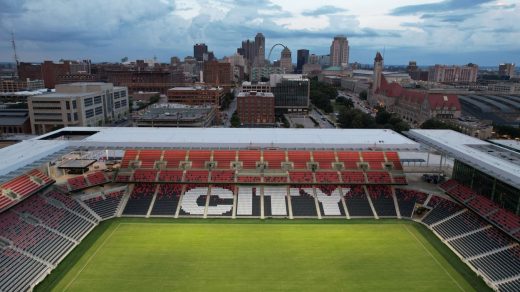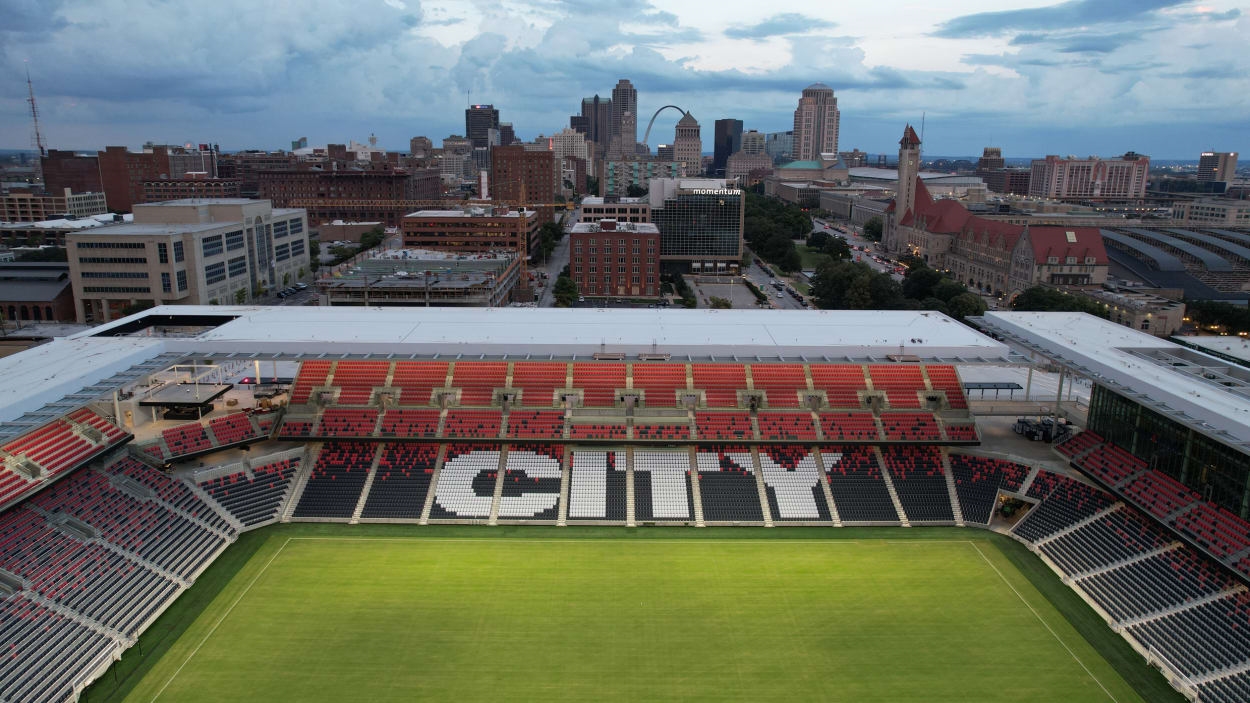How St. Louis designed its new soccer stadium to feel like part of the city
As buildings designed to hold tens of thousands of people, sports stadiums don’t exactly blend into most urban settings. Feeling more like sporadically populated UFOs than typical buildings, their gargantuan size tends to set them apart. And when they’re out in the suburbs surrounded by massive parking lots and structures, as they often are, they can seem even more disconnected.
The stadium purpose-built for St. Louis City SC, the city’s new Major League Soccer team, has chosen a different development model. The 22,500-seat facility, which is hosting the team’s inaugural home match March 4, was built as urban infill, taking over a blank piece of land once reserved for a highway extension. As such, the stadium is surrounded not by massive parking lots or sprawling openness but by the actual city the club is named after.
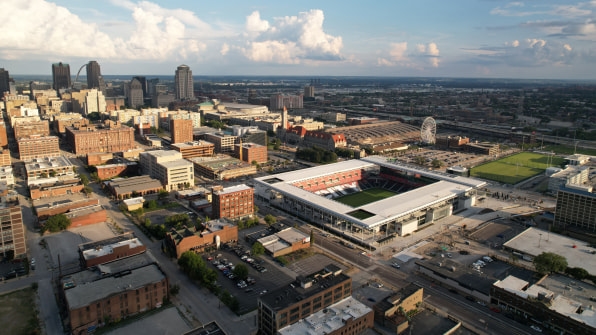
“Inside the stadium, where I’m sitting right now, you have peeks of the surrounding city and neighborhood, the old brick architecture of St. Louis,” Matt Sebek, the club’s chief experience officer, says over the phone a few weeks before the first game. “It just feels like the stadium has been here longer.”
CityPark stadium, designed by the architecture firm HOK, has a relatively low profile despite how many people it can hold. The perimeter has a partly porous design, with places where people can catch glimpses of the action on the pitch. A canopy shading system seems to hover above the stands, providing weather protection while giving the stadium an airy, open look from the outside. Inside the compact site, all seats are within 120 feet of the playing field, making for an intimate viewing experience. And the pitch itself is sunk 40 feet down from street level, so the structure is less imposing and feels more a part of the neighborhood.
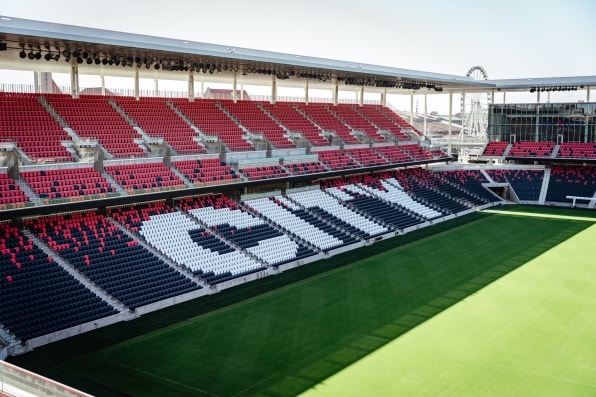
“We’re not surrounded by parking lots. We’re surrounded by buildings, some of them 100 years old,” Sebek says. “We’ve got green space and parks and public transit right across the street. So there are a lot of benefits to how accessibility in and around the stadium happens.”
And unlike many professional sports facilities, which sprawl out on suburban campuses, St. Louis’s team training facilities, front office headquarters, and team store are all colocated in a 32-acre district. The back-of-house operations and delivery bays are tucked underground, which means the stadium is walkable on all four sides. Sited close to the city center, the district manages to weave the typically mega-sized facilities of professional sports into an existing neighborhood.
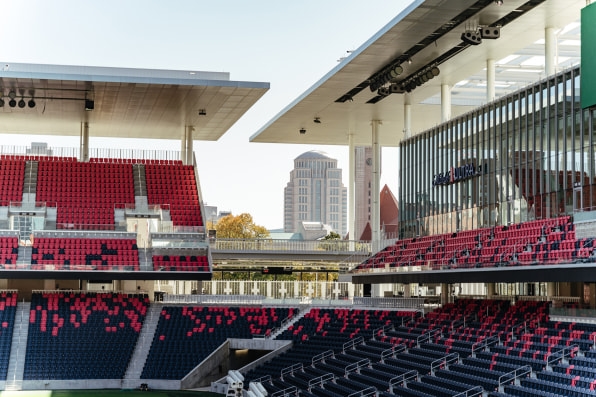
“We were able to leverage the land in a really unique way,” Sebek says. “It was a no-brainer for us to center our headquarters downtown.”
Building in one location provided operational benefits as well. The club was able to include fiber-optic lines connecting all of its facilities, enabling a more deeply embedded digital infrastruture in the stadium planning. Video from the games can be moved from stadium cameras to video editing suites almost instantaneously. “We can cut up footage in real time,” Sebek says.
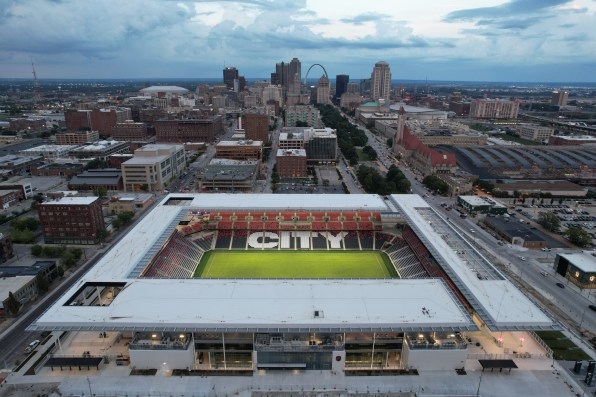
The high-tech approach will also change the fan experience. Sebek says the stadium is designed to better integrate the digital technologies fans have come to expect in their daily lives while also improving the way they experience live sports. The stadium includes “frictionless” markets that use sensors and cameras to ring up customers, so fans can buy snacks and souvenirs without waiting in line. An integrated mobile ordering system allows attendees to preorder food and drinks instead of fighting the crowds during the halftime refreshment rush.
Sebek says some of these ideas came directly from fans. The stadium project got started just before the pandemic, and the club used the uncertainty of its early days to gauge future spectators about how they envisioned the club becoming part of the community. “They wanted us to be the first of the new and not the last of the old in how people thought of sporting venues,” Sebek says.
(17)

